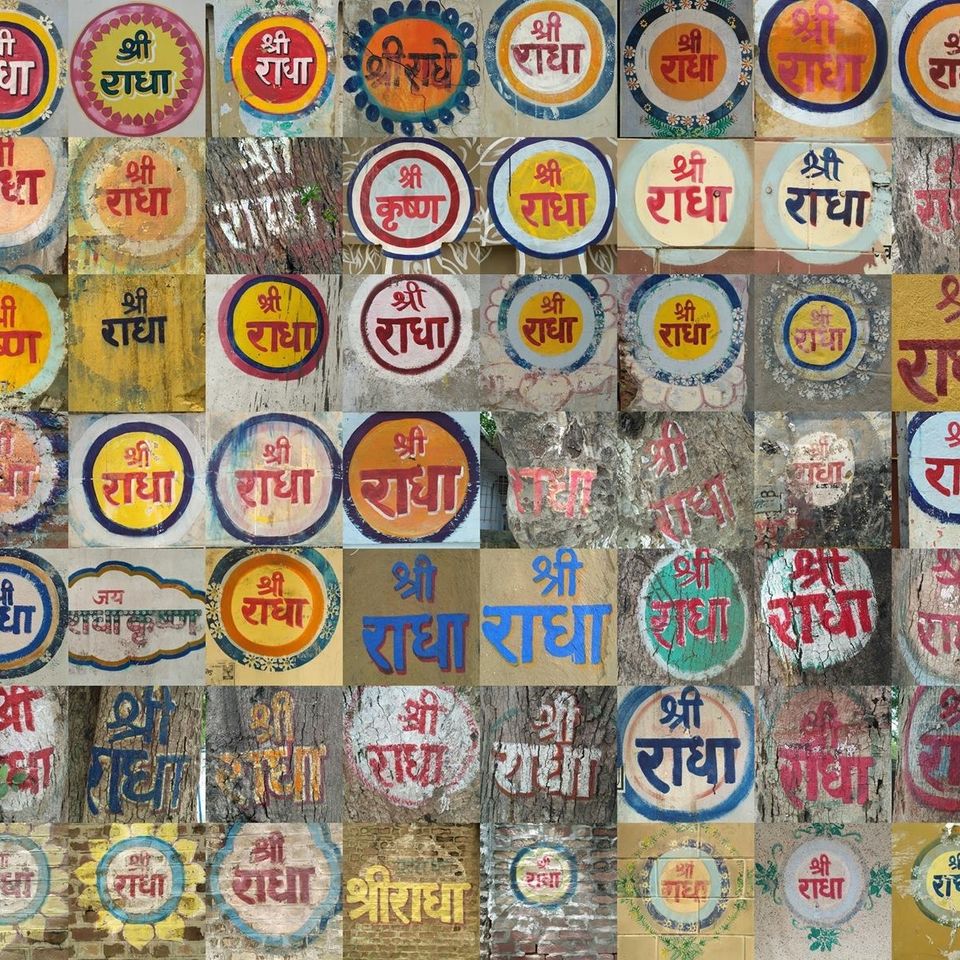Radhika’s Pratah-snana and Vesha-karana
Verse
58
Before Srimati awakens, the manjaris arrange the necessary items for her bath
and stand ready near the snana vedi (bathing seat).
Rasa-tarangini Tika:
Let's return to Krishna-bhavanamrita to see how Srila Vishwanath Chakravarti
describes the manjaris:
After Sri Radhika returns home and falls asleep in her bed, all of her kinkaris
(One who asks, "What can I do for you?" In other words, a servant-girl) such as
Rupa Manjari etc., take their morning baths. Then they anoint their bodies with
chandan, kasturi and other scents and dress themselves with Praneshwari Radha's
prasadi malas, ornaments and clothes.
These dasis have discarded all of their personal desires to fully direct their attention to Sri Radha Krishna's premamaya seva; hence their beauty is unrivaled! In fact, simply the effulgence of their toenails defeat a shimmering lightning flash! And moreover, these dasis are murtimati-vaidagdhi-svarupa (the very form of cleverness personified) - so they would easily qualify to be Yutheshwaris (group leaders) themselves. Yet, they're disinterested in such fascination. Instead, they completely submerge within the amrita-sagara of Vrishabhanu Raja nandini's seva rasa.
The Scenery at Javat
Having received Srimati Radharani's sakshat-darshan (direct seeing) and
merciful order, Siddha mahatma Sri Krishna Das Baba of Govardhan compiled the
Gaura-govinda-lilamrita-gutika. This book is ideal for devotees wanting to
learn about manasi seva in manjari bhava.
In the pratah Lila, Siddha Baba
provides a detailed description of Radha's home, the surrounding area of Javat,
and the sadhaka manjari's seva. A brief synopsis of this narration can be
inserted here:
Upon rising (in her husband's home at Javat) and washing herself, etc., the
sadhaka manjari first cleans Radharani's bathroom, then she cleans the bathroom
of her Guru Manjari.
Next she bathes, dresses and decorates herself with Radha's prasadi outfit and proceeds to clean her Guru Devi's room. After assisting in her Guru Manjari's bath, dressing and decorating, she follows her and the other manjaris who now scurry towards Radha's home to perform the morning seva; along the way the sadhaka manjari may pick flowers for making garlands.
Surrounding Jatila's estate is a high wall with entrances in each of the four directions. Outside is a banana grove that is surrounded by flower gardens and fruit orchards. Next is a main road that encircles Jatila's entire property. On the outer side (in eight directions) are the sakhis' and manjaris' homes where their husbands reside.
The Gutika gives the details where each home is; even the specific location where the sadhaka manjari's husband lives can be calculated. Next are the marketplaces and the main village. On the outskirts of Javat are the goshalas where countless cows and bulls are kept.
On Javat's east side is Kishori Kund, which has jeweled ghats and blue lotus flowers growing in the water. Sometimes Srimati Radharani bathes here. On Kishori Kund's banks is a beautiful flower garden named Kandarpa-kuhali where Krishna occasionally meets with Radha. Within this garden is a ratna mandir with a high turret, from which Radharani and the sakhis can watch Krishna milking the cows at Nandagram.
Flowing north of Javat is a crystal-clear river
named the Parala-ganga.
As the sadhaka dasi enters Radha's palace, she takes up a golden broom and, following
her Guru Devi's instructions, cleans the floors and verandas with scented
water.
Then she prepares an asana for Radha.
Next she arranges the items that
Radha uses upon rising, such as:
her tooth powder, mango twig, scented water
for washing, tongue scraper, snana vastra, Narayan oil, amalaki oil and gamcha.
During the summer, cool rose water is used for Radha's bath; in the winter,
warm water must be prepared in advance. And now, as the verse mentions, we find
all of the manjaris standing ready near the snana vedi.

